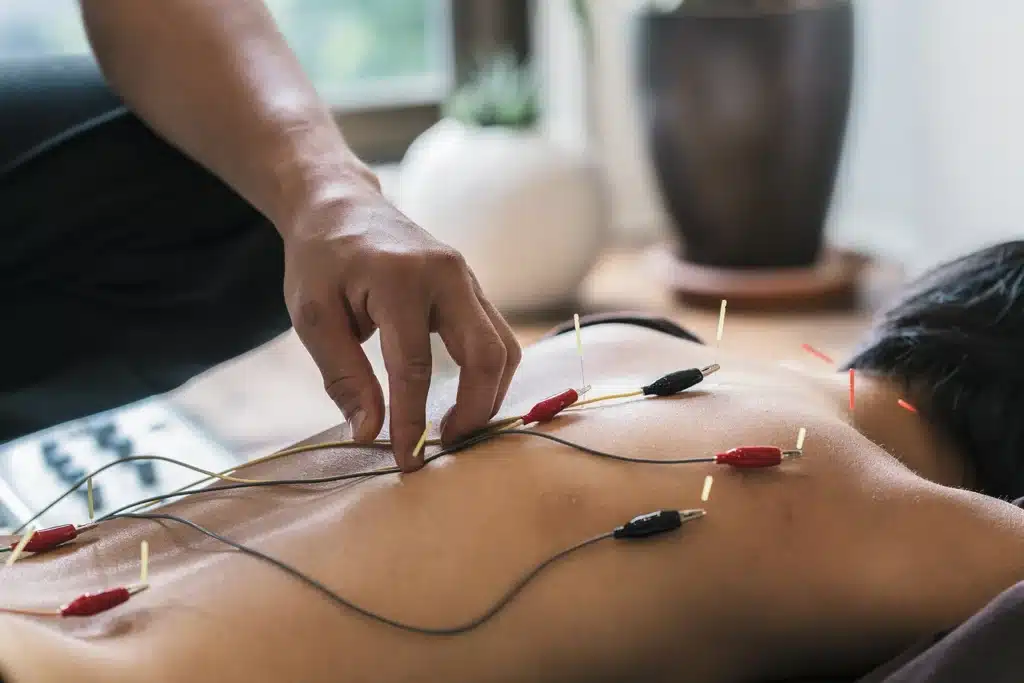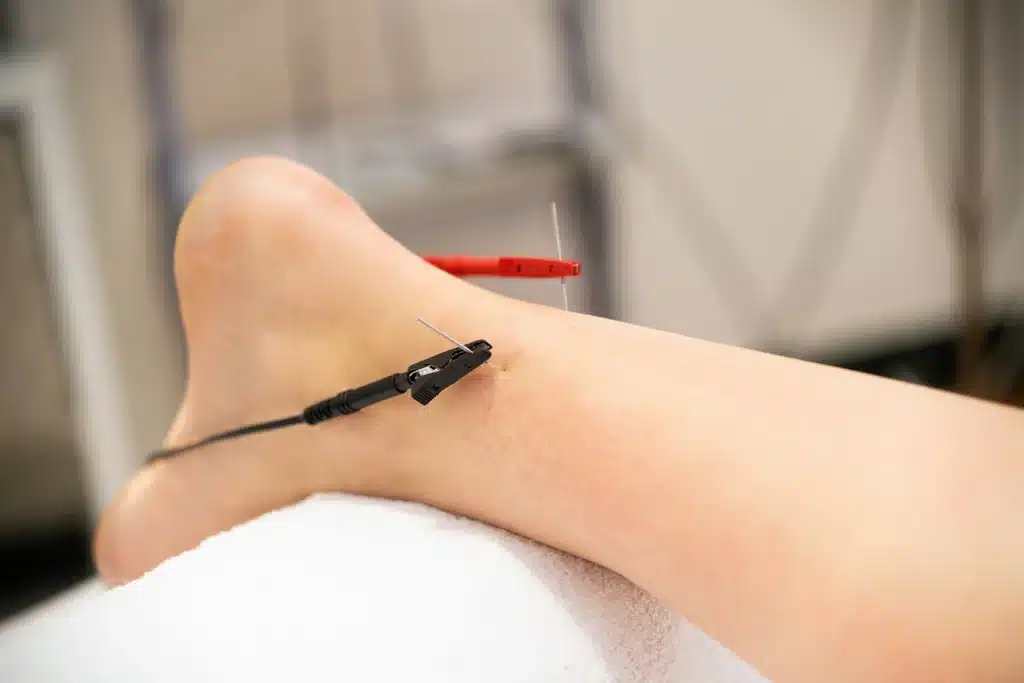
Table of Contents
ToggleAcupuncture physical therapy might seem like a distant realm in the broad spectrum of healthcare.
However, the innovative blend of these two disciplines is revolutionizing healing and pain management practices globally.
Let’s deep dive into this fascinating journey of recovery that integrates the wisdom of the East with Western therapeutic practices.
Acupuncture is a therapeutic technique steeped in the ancient wisdom of Traditional Chinese Medicine (TCM). The procedure involves the careful insertion of ultra-thin needles into predefined acupuncture points scattered across the body.
These points map onto channels, or ‘meridians,’ creating a complex network that serves as conduits for the body’s vital energy or ‘Qi’. The primary objective of acupuncture is to regulate the flow of Qi, thereby restoring and maintaining the body’s natural balance.
Modern science offers a parallel interpretation, illustrating acupuncture as a mechanism that triggers numerous physiological responses.
The subtle stimulation of specific nerves, muscles, and connective tissues leads to an increase in blood flow and kick-starts the body’s endogenous pain management system. It achieves this by releasing endorphins, the body’s natural pain-numbing chemicals, creating an analgesic effect.
In today’s medical landscape, acupuncture has gained widespread acceptance and recognition as a viable treatment option for an array of conditions. Its application ranges from managing chronic pain, arthritis, and anxiety, to treating insomnia and migraines, and even aiding in fertility issues.
As research evolves, so does our understanding of the expansive potential acupuncture holds in healthcare.
Acupuncture, a time-honored therapeutic approach, offers a multitude of health benefits that extend far beyond mere symptom relief.
Let’s delve deeper into the impactful advantages of this practice:
In the realm of clinical research, acupuncture has shown promising results, particularly in the field of pain management. Numerous studies have endorsed its effectiveness in managing chronic pain, marking it as a potent, non-pharmacological approach to pain management.
As our understanding deepens, the benefits of acupuncture continue to underscore its potential in contemporary healthcare.
Integrating acupuncture into physical therapy is like bringing together the best of both worlds.
Acupuncture can enhance the effectiveness of physical therapy by:
In essence, the integration of acupuncture and physical therapy provides a comprehensive approach to treatment, facilitating quicker recovery and improved functional outcomes.

Orthopedic acupuncture is a specialized approach that combines traditional acupuncture with a thorough understanding of the musculoskeletal system and biomechanics.
It can be particularly effective in treating musculoskeletal disorders such as tennis elbow, carpal tunnel syndrome, or various forms of arthritis.
The incorporation of acupuncture within orthopedic treatment plans has often resulted in improved patient outcomes.
Its non-invasive nature and focus on holistic healing complement orthopedic treatments, thereby aiding faster recovery and improving the quality of life for patients.
Choosing the right acupuncturist is essential to ensure you receive effective and safe treatment. Here are some factors to consider:
When visiting an acupuncturist for the first time, you can typically expect a comprehensive consultation discussing your health history, lifestyle, and specific complaints.
Subsequent sessions will involve the insertion of needles at specific points, followed by a period of rest.

The innovative integration of acupuncture and physical therapy presents a revolutionary approach to health and healing, emphasizing the body’s inherent healing capabilities.
Whether it’s enhancing pain management, improving mobility, or boosting recovery times, the amalgamation of these two disciplines offers a potent and holistic healing approach.
As interest in integrative health approaches continues to grow, the role of practices like acupuncture in complementing conventional physical therapy will likely gain more traction.
The next step? Consider exploring this healing journey yourself and experiencing first-hand the benefits it can offer.
Embrace the revolution. Find a licensed acupuncturist and start your journey towards a healthier you with acupuncture physical therapy.
GET IN TOUCH +
285 Sills Road
Building 5-6, Suite E
East Patchogue, NY 11772
(631) 475-5511
184 N. Belle Mead Road
East Setauket, NY 11733
(631) 675-6226
GET IN TOUCH +
285 Sills Road
Building 5-6, Suite E
East Patchogue, NY 11772
(631) 475-5511
184 N. Belle Mead Road
East Setauket, NY 11733
(631) 675-6226
SUBSCRIBE TO OUR NEWSLETTER +
Send us a Google review. Click this link and let us know how we did!
Review us on Yelp too.